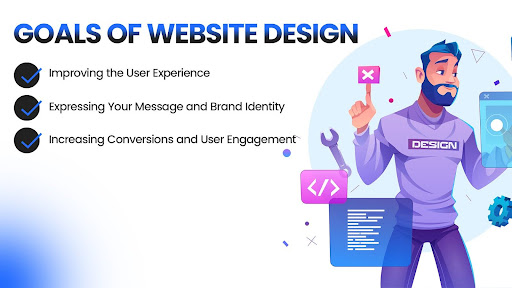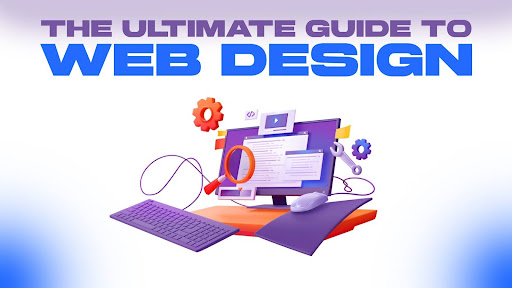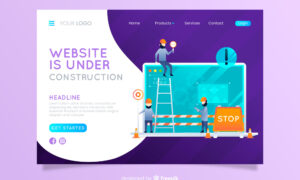Web Design: The field of designing user interfaces for websites is known as Website Design. Instead of focusing on the coding, it addresses the website’s appearance. User Interface (UI) Design is the design of the interface; User Experience (UX) Design includes designing the user’s flow on the website, how they traverse it, and other aspects of the website.
Web Design that is responsive: what is it?
Responsive Web Design is a variation of Web Design which allows the site to be functional at all screen sizes. Responsive websites change their dimensions according to the size of device’s screen. No matter what the device is, it can always adapt the screen instantly on the user device, admobile, tablet, etc. Additionally, websites scale their parts and content appropriately. Depending on the device’s screen size, an interface’s parts can be made larger or smaller.
Adaptive Web Design: what is it?
Creating distinct website layouts for various devices is known as adaptive Web Design.The screen size of several devices is considered, and a unique layout is created for each one. It varies from responsive Web Design in that adaptive design alters the complete layout for a given display size, whereas responsive Web Design makes the identical website user interface vary based on the screen size of the device. Their user experience may also differ because various layouts and gadgets are used to build them. It is possible to design distinct user experiences for various devices.

What Does Website Design Accessibility Mean?
In Website Design, accessibility refers to creating user-friendly websites that are accessible to all users, including those with disabilities. The website is incredibly easy to use and comprehend even for those who have visual, auditory, motor, or comprehension impairments. Images now have descriptions added so that they may be read aloud by specialized software.
Giving movies written descriptions or subtitles makes the website easier to use and more accessible. The use of colors ensures that everyone can understand the material. This kind of design abides by guidelines such as the Web Content Accessibility Guidelines to assure that the website is user-friendly and accessible to a wide range of customers.
E-commerce Website Design: What Is It?
Online shopping Web Design is the process of creating a website especially for online shops and enterprises. These websites give a visually engaging and easy way of purchasing and selling of products and services.
They also give a smooth online shopping experience of finding products and checkout online. By sitting in the middle they assist vendors to sell goods to customers online and without interference from otherwise outside parties.
Interactive Web Design: What Is It?
Creating a website that allows users to actively engage with its features and information is known as interactive Website Design. Engaging components including buttons, forms, animations, videos, and more are present on these web pages.
An interactive webpage is dynamic and captivating because users can take different activities that elicit different replies. The goal of an interactive Website Design is to increase user engagement and make browsing more pleasurable and intuitive.

Goals of Website Design:
These are the three main goals of Website Design:
1. improving the User Experience
The goal of well-designed websites is to give users a smooth and joyful experience. Achieving this relies on rigorous Cross-Browser Testing to ensure consistency across devices, so every visitor enjoys a seamless interaction regardless of their platform.
It guarantees that your website is user-friendly, accessible to all people, and intuitive.
This includes user-friendly interfaces, responsive design, quick load times, and a clear layout.
2. Expressing Your Message and Brand Identity
Your brand’s identity, values, and messages are communicated through Website Design.
Your brand’s personality, for instance, is established by your content, visual components, colors, typography, and pictures.
3. Increasing Conversions and User Engagement
Encouraging visitors to take desired activities is the ultimate purpose of Website Design. For additional insights on optimizing your page for conversions, check out WordPress Index Page Setup.
For instance, buy something, subscribe to a newsletter, or get in touch with your company.
By directing website users toward these behaviors, effective design maximizes conversion rates.
Concise table that captures a thought on how web design has evolved over time:
| Era | Design Focus | Key Characteristics |
| Early 2000s | Static & Desktop-Only | Fixed layouts, minimal interactivity, and limited accessibility. Designs were primarily focused on desktop experiences with little attention to varying screen sizes. |
| Mid 2000s to Early 2010s | Fluid & Responsive | Introduction of flexible grids and responsive design. Websites began adapting to multiple devices, marking the shift from static to more user-friendly experiences. |
| 2010s | Adaptive & Accessible | Emergence of adaptive design with tailored layouts for specific devices. Increased focus on accessibility standards (e.g., WCAG) to ensure inclusivity for all users. |
| Present & Future | Interactive & Personalized | Emphasis on highly interactive elements, AI-driven personalization, immersive interfaces (including AR/VR), and continuous improvements in accessibility and user flow. |
This table outlines the progression of web design from static beginnings to dynamic, user-centric approaches seen today and anticipated in the future.
Final Thoughts:
Web design isn’t simply an aesthetic matter, it is about designing an experience that touches users on every level. Responsive layouts that change their shapes according to different devices, adaptive designs that create personalized experiences by specific screens, and everything being accessible and interactive are what make up the basic solution of a good web design and digital footprint.
Integrating these principles not only improves user satisfaction, but also helps creating a brand identity and boosts conversion rates. Especially given that we are currently talking about the web design sphere and the entire online environment fully evolving over the timeframe, there were some things that became important in the creation of websites that prevented them from being not only visually impressive, but also functionally reliable.
FAQs
What is Website Design?
The field of Website Design is concerned with creating websites for the Internet.
Adaptive Website Design: What Is It?
Creating distinct website layouts for various devices is known as adaptive Website Design.
What Does Website Design Accessibility Mean?
In Website Design, accessibility refers to creating user-friendly websites that are accessible to all users, including those with disabilities.
What is Website Design for E-Commerce?
Online shopping Website Design is the process of creating a website especially for online shops and enterprises.
Interaction Website Design: What Is It?
Creating a website that allows users to actively engage with its features and information is known as interactive Website Design.



































